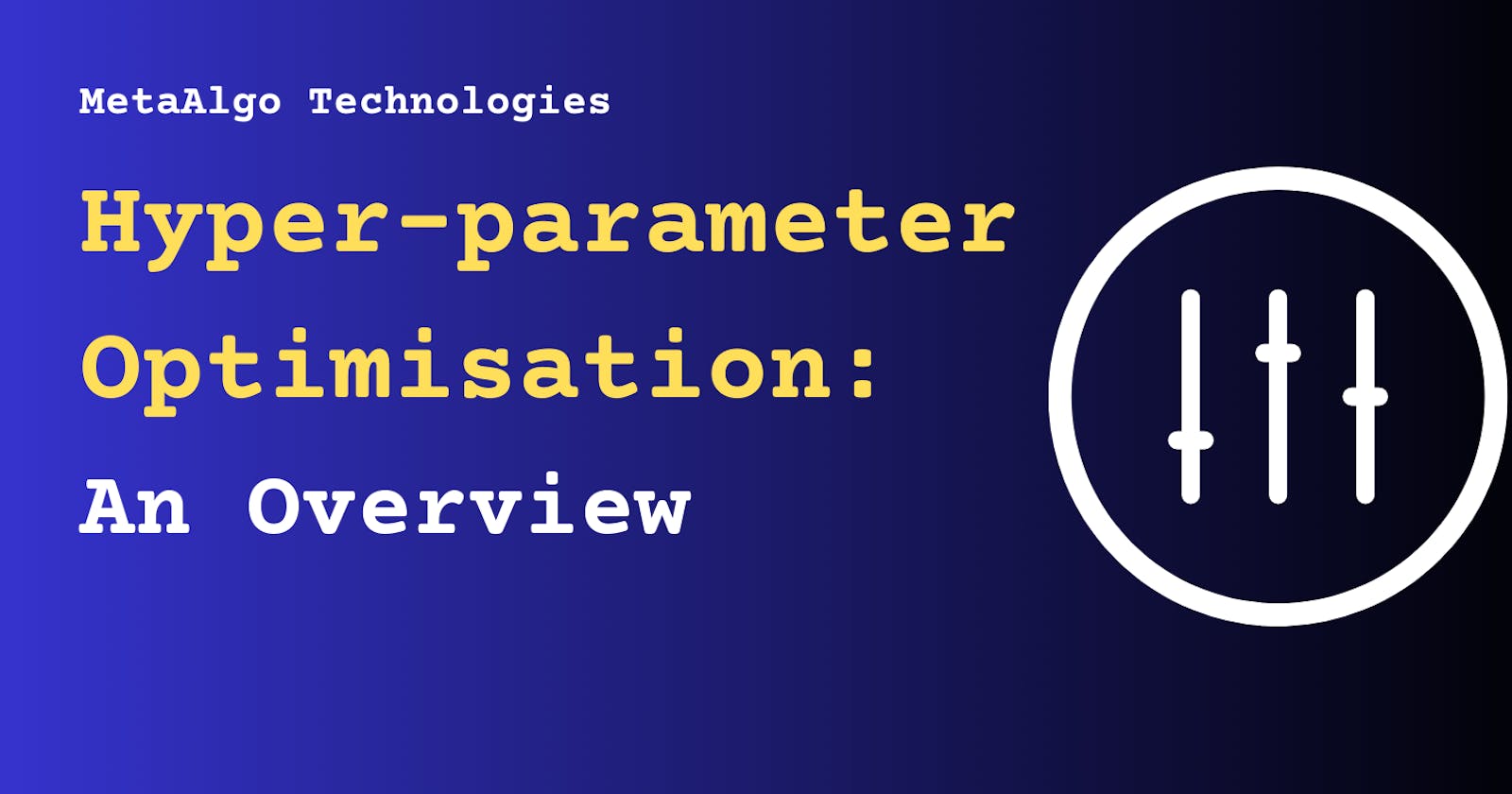Hyper-parameter Optimisation: An Overview
Hyper-parameter Optimisation is a very important part of data science not talking about it would be a crime
Introduction
The quest for accurate machine learning models demands a meticulous approach to hyperparameter tuning, which are the variables that govern the model's performance, such as the learning rate, regularization strength, and number of hidden layers, among others. The efficacy of a model can be considerably enhanced by mastering the art of hyperparameter tuning, which can mitigate overfitting and improve accuracy.
In this article, we shall delve into the various methods of hyperparameter tuning in machine learning.
Popular Methods
Manual tuning
The simplest and quickest approach to hyperparameter tuning, involves intuition and experience to select the optimal hyperparameters for the model. While this method may provide a rough idea of the optimal hyperparameters, it can be time-consuming, and the results may not be the best.
Grid search
A popular hyperparameter tuning method, tests all possible combinations of hyperparameters by specifying a range of values for each hyperparameter before training the model. Although this systematic approach ensures all combinations of hyperparameters are tested, it can be computationally expensive and time-consuming for a large number of hyperparameters.
Random search
Another hyperparameter tuning method, samples values for each hyperparameter from a specified range randomly. This method is faster and more efficient than grid search when there are many hyperparameters to test, as it doesn't require testing all possible combinations. However, it may not explore the entire search space, missing optimal hyperparameters.
Bayesian optimization
An advanced hyperparameter tuning method, employs a probabilistic model to predict the performance of different hyperparameter combinations. Bayesian optimization iteratively evaluates the performance of a set of hyperparameters, using the data to update the model and choose the next set of hyperparameters to evaluate. This method is more efficient than grid search and random search and is better suited to explore the search space for optimal hyperparameters.
Genetic algorithms
Inspired by natural selection, create a population of hyperparameters, evaluate their performance, and select the best hyperparameters to create a new population. The process continues until the optimal hyperparameters are found. While this method is more efficient than grid search and random search and can handle a large number of hyperparameters, it may not be as effective as Bayesian optimization.
Particle swarm optimization (PSO)
A metaheuristic optimization algorithm, simulates the behavior of a flock of birds or particles. In PSO, a population of candidate solutions (particles) moves around the search space, with each particle’s position representing a set of hyperparameters. The particles move toward the best solution found by any particle so far, while also exploring the search space. This method can be effective in finding optimal hyperparameters for complex models, but it may require a large number of iterations to converge.
Ant Colony Optimization (ACO)
Another metaheuristic optimization algorithm, is based on the behavior of ant colonies. In ACO, the search space is represented as a graph, and each edge represents a set of hyperparameters. The algorithm simulates the behavior of ants, which leave pheromone trails to mark the paths to food sources. In ACO, the pheromone level on each edge represents the quality of the corresponding hyperparameter set. The ants move along the graph, selecting edges with a high pheromone level. The method can be effective in finding optimal hyperparameters for complex models, but it may require a large number of iterations to converge.
Reference Books
Conclusion
In conclusion, the effectiveness of hyperparameter tuning methods depends on the model's complexity and the search space. Therefore, selecting the right method requires a profound understanding of the model and the problem at hand.
